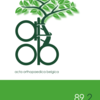Outcome of lateral retinacular nerve transection combined with release for recalcitrant iliotibial band friction syndrome
iliotibial band friction syndrome, neurectomy, surgical release, PROM, outcome
Published online: Nov 05 2023
Abstract
In this retrospective study, a technique consisting in neurolysis of the lateral retinacular nerve combined with a partial release through elliptic excision of the iliotibial band (ITB) is evaluated for efficacy in recalcitrant ITB friction syndrome and compared with results from other techniques reported in literature. From April 2014 to December 2017, 21 patients suffering from recalcitrant ITB friction syndrome were surgically treated with the aforementioned technique. 15 patients (15 knees) were available for a written retrospective reassessment after completion of a follow-up period of at least 12 months. Residual pain was scored using the Visual Analogue Scale (VAS). The functional outcome was evaluated by two patient reported outcome measurement scales (PROMs), the Lysholm and the International Knee Documentation Committee (IKDC) score. Return to sport was analysed by duration of the inactivity period as well as by the Tegner score. Overall satisfaction was evaluated using a modified Boyden scale. At final follow-up of one year, the performed intervention resulted in a pain reduction (VAS 4.2 (1-8) to 1.4 (0-6)) and improved knee function (Lysholm 59.53 to 87.73, IKDC 75) with return to sport (Tegner 4.3 to 5.4) after a median of 23.8 weeks (6 to 52). Twelve patients reported good or excellent results (80%) at final follow-up, and 12 patients (80%) would undergo surgery again, if necessary. The treatment of recalcitrant ITB friction syndrome by combining neurectomy of the lateral retinacular nerve with elliptic excision of the ITB resulted in good to excellent results in 80% of treated cases with return to sport in 93%.
